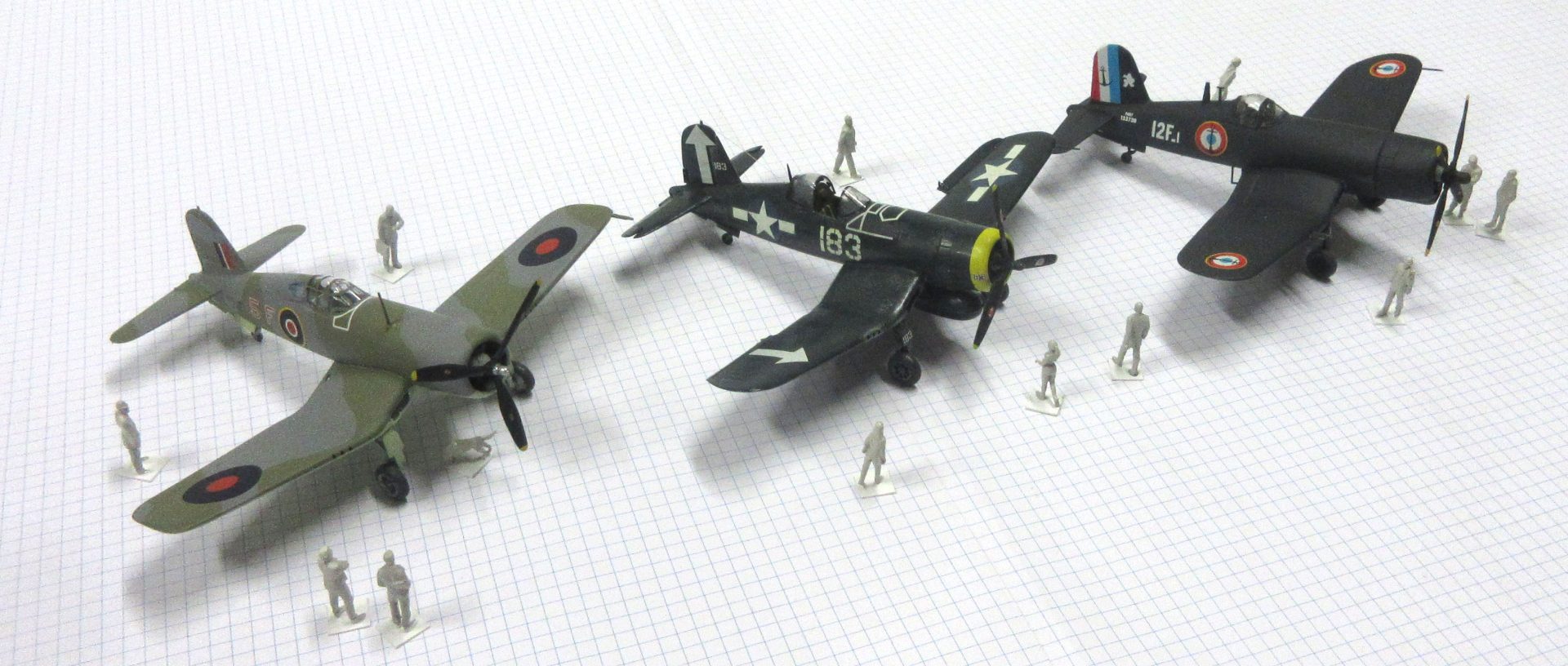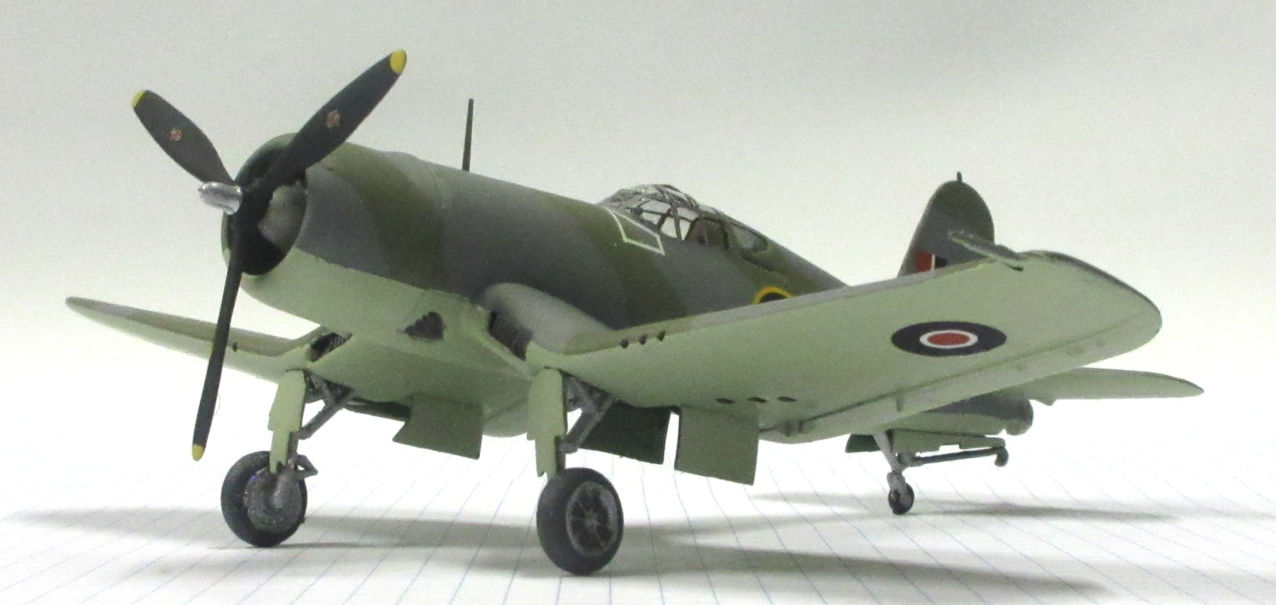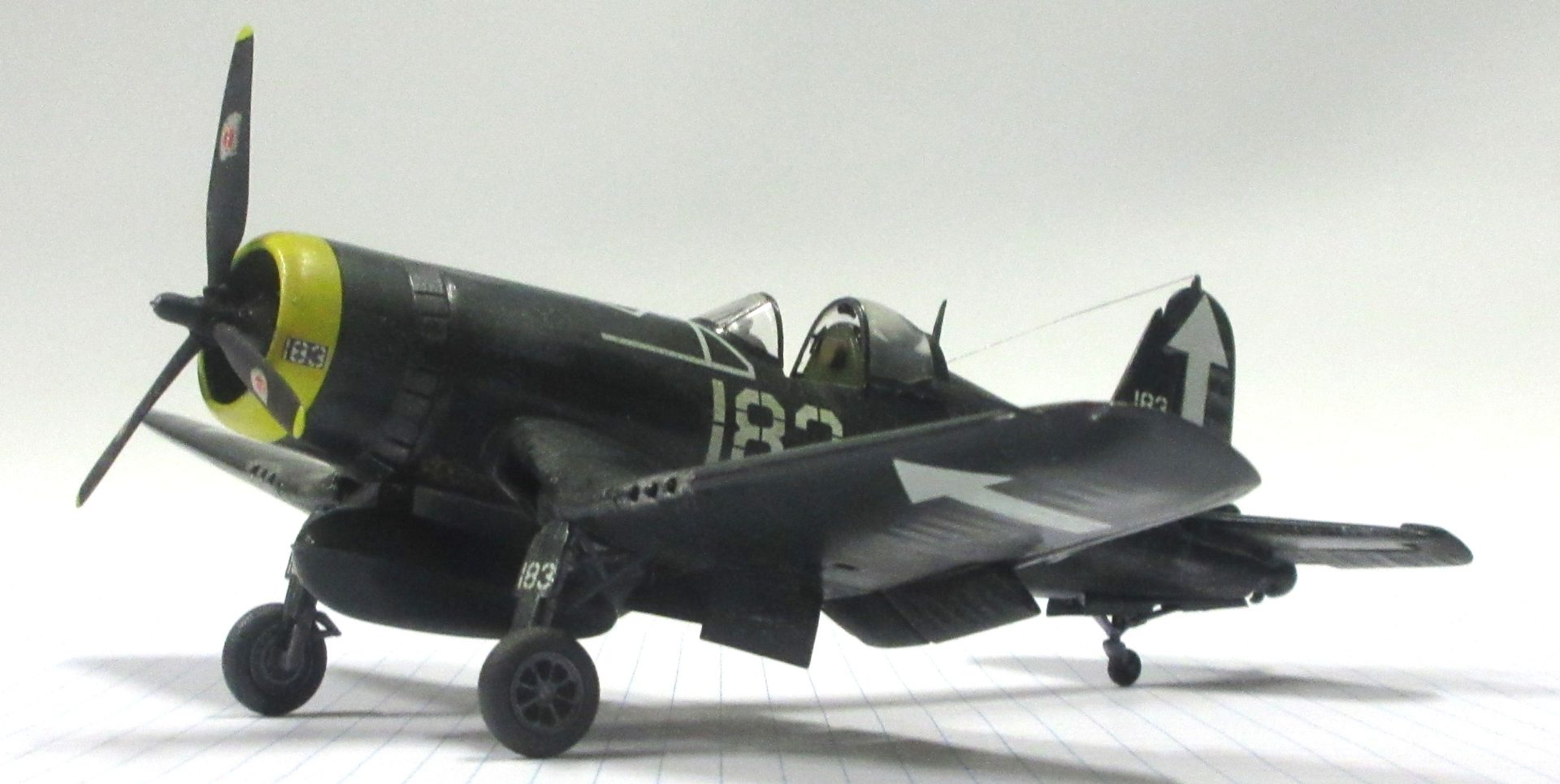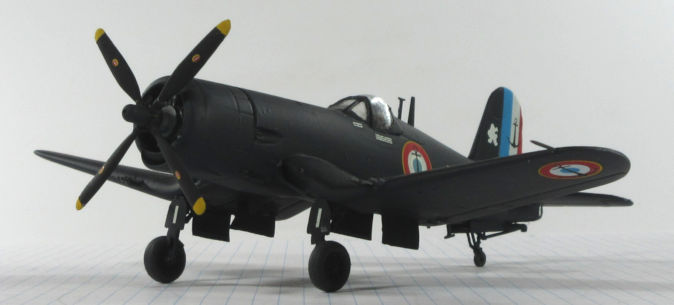Vought Corsair I – Vought F4U-1D – Vought F4U-7
The Curator’s Choice 65
 One of the most distinctive shapes of all World War 2 aircraft is the bent wing of the Vought F4U Corsair naval fighter. It came from the desire to fit the most powerful piston engine possible to a fighter to give it outstanding performance. Such a large engine needed a large propellor to use all the engine’s power and that large propellor needed a lot of ground clearance. To provide that clearance the aircraft would need very long undercarriage which would create problems of stowing in when retracted and making it strong enough for heavy landings on the decks of aircraft carriers. The other solution was the bend the wings so they were closer to the deck where the undercarraige extended from them. It was an excellent solution and created one of the great fighters of World War 2 and beyond. Let’s look at three which cover the span of this aircraft’s operational life across two decades.
One of the most distinctive shapes of all World War 2 aircraft is the bent wing of the Vought F4U Corsair naval fighter. It came from the desire to fit the most powerful piston engine possible to a fighter to give it outstanding performance. Such a large engine needed a large propellor to use all the engine’s power and that large propellor needed a lot of ground clearance. To provide that clearance the aircraft would need very long undercarriage which would create problems of stowing in when retracted and making it strong enough for heavy landings on the decks of aircraft carriers. The other solution was the bend the wings so they were closer to the deck where the undercarraige extended from them. It was an excellent solution and created one of the great fighters of World War 2 and beyond. Let’s look at three which cover the span of this aircraft’s operational life across two decades.
Vought Corsair I in 1/72 by Hasegawa
This is the first version of the F4U Corsair to enter service, beginning in December 1942 as the F4U-1. However, the US Navy considered it unsuitable for carrier operations for a couple of reasons, most notably poor visibility over the nose during landing on carriers. Despite this, they were flown with land based units of the US Navy and Marine Corps. Britain’s Royal Navy began receiving these aircraft, which they called Corsair Is, in November 1943, The most noticeable modification was eight inches clipped off the wing tips so they could fit into the hangars of British aircraft carriers. Despite the problem with landing the aircraft the British developed techniques for doing it in realtive safety and were the first to fly Corsairs operationally from carriers.
The F4U is a very popular modelling subject and there are more kits, and boxings of kits of it than I’ve had hot breakfasts (and I’ve had a few). Most of them are for the F4U-1D version but there are a few with earlier ‘birdcage’ canopy that early Royal Navy and US Marine F4Us had. I made this model from the Hasegawa kit which was published first as the F4U-1D version in 1981, with the birdcage canopy version around the same time and in this British version in 2003. I don’t recall now whether the kit comes with clipped wings or whether I had to do it. Either way it is an easy conversion. There is a nice build review of this kit on the Modeling Madness website.
Vought F4U-1D in 1/72 by Hasegawa
This was the last of the first F4U-1 version of this aircraft. It had a more powerful engine and missile and bomb racks fitted under its wings for ground attack operations. The most prominent change was a new cockpit canopy which allowed the pilot to sit higher with improved visibility, which also improved aircraft carrier landings. They began entering service with the US Navy, Marine Corps and other allied air forces in April 1944. They became the US Navy’s main fighter for the rest of the war and remained in second line service with it into the 1950s.
I made this model using the then new 1983 Hasegawa kit. At the time it was the best available and is still pretty good. Most reviewers and commentators seem to think that the Tamiya kit is the best, followed perhaps by the Hasegawa kit despite its raised panel lines. Most people also say to stay clear of the Revell kit. Here is the discussion on which is the best F4U kit in 1/72 that took place on Britmodeller. Read it and see what you think.
Vought F4U-7 in 1/72 by Italeri
During the Korean War later versions of the F4U were used as ground attack aircraft with stronger airframes and more powerful engines to carry larger underwing armaments. The F4U-7 was a version of this aircraft manufactured exclusively for the French Navy. The first one flew in July 1952 and 94 were delivered. They flew in French conflicts in Indochina, Algeria and Suez with the last ones being withdrawn from service in 1964.
This model was made using the 1995 Italeri kit. That company has published several versions of late model F4Us and the Revell F4U-5 and the Tamiya F4U-4B kits are based on this Italeri kit. The only other F4U-7 kit I know of is the High Planes kit which would be, judging from my experience with High Planes kits, very challenging indeed. So it looks like you’re stuck with the Italeri kit if you want to make this version of the F4U. Fortunately I found it an easy kit to make with no real problems. ‘Well worth picking up’ says the in-box review in Modeling Madness .



